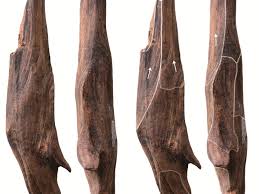Newly uncovered wooden tools from Pleistocene China reveal complex, plant-focused technology far earlier than expected in East Asia.
Researchers working at the Pleistocene-era Gantangqing site in southwestern China have uncovered a diverse set of wooden tools dating from approximately 361,000 to 250,000 years ago.
This discovery represents the oldest known example of advanced wooden tool technology in East Asia.
Analysis of the tools suggests they were not created for hunting but were instead designed for tasks like digging and processing plants, offering new insight into the daily lives of early humans in the region.
While it is well established that early humans have been crafting wooden tools for more than a million years, such artifacts are rarely preserved, especially from the Early and Middle Pleistocene.
Most of the wooden tools previously recovered come from archaeological sites in Africa and western Eurasia.
Some of the most significant finds include spears and throwing sticks unearthed in Germany and the United Kingdom, which date back between 300,000 and 400,000 years.
Other important examples include wooden construction elements from Zambia and tools like digging sticks and planks found at sites in Israel and Italy.
While the long-standing Bamboo Hypothesis argues that early East Asian populations relied on bamboo for toolmaking, archaeological evidence for organic material-based tools from the region is scarce.
These tools, most of which were fashioned from pine, range from large two-handed digging sticks to smaller hand-held implements, and even include hook-like tools potentially used for cutting plant roots.
compared to other well-known contemporaneous wooden tool sites in Europe, which are generally characterized by medium-sized hunting gear, Gantangqing stands out for its broader and more diverse array of small, hand-held tools designed primarily for digging up and processing plants.
The sophistication of these wooden tools underscores the importance of organic artifacts in interpreting early human behavior, particularly in regions where stone tools alone suggest a more “primitive” technological landscape, say the authors.



